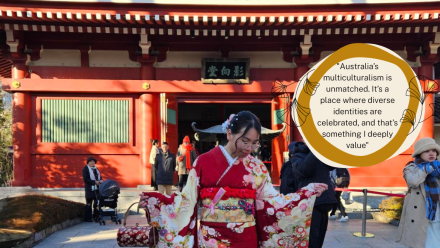Life sentences: Australia's rabbits
In the new ANU Reporter, DR NICOLE MCLENNAN, PhD '98, goes down the rabbit hole on an unexpected adventure.
Subscribe to receive the next print edition of ANU Reporter.
In the fledgling colony of New South Wales, Reverend Samuel Marsden (1765-1838) quarrelled with naturalist George Caley (1770-1829) after the latter's dog had "worried the chaplain's pet rabbits".
Intrigued by the early mention of bunnies in the Australian Dictionary of Biography, I wondered how the story of Australia's rabbits began.
Marsden was not Australia's first rabbit owner. Five rabbits were part of the livestock brought on the First Fleet.
James King's Tasmanian rabbit breeding
Perhaps one of the earliest commercial ventures involving rabbits was initiated by merchant James King (1800-1857) who, in 1825, applied for a land grant to establish rabbit breeding on Betsy's Island, Tasmania.
His interest was bought by Captain John Bell (1790-1841), who bred silver-haired rabbits and exported their skins to China.
However, it is Thomas Austin (1815-1871) who is 'credited' with releasing wild rabbits on the grounds of his Victorian estate, Barwon Park, in 1859. He, like fellow landowner Thomas Holt (1811-1888), had imported the rabbits for sport.
Austin's decision had devastating consequences as the rabbits quickly adapted to their new environment, spreading across south-eastern Australia.
In the early 1880s, pastoralist James Cudmore (1837-1912) reported that a rabbit plague had reduced his woolclip by 80 per cent. Samuel McMillan (1859-1931), inspired by the need to control rabbits, invented a poisoning machine called The Ringer.
The rabbit skin industry starts
By the Great Depression, thousands of people made a living in the rabbit industry. In 1934 Henry Bolte (1908-1990) quipped that his 900-acre property boasted 600 sheep and an impressive 60,000 rabbits. The future Premier of Victoria supplemented his income by trapping rabbits for their skins and carcasses.
Sydney residents could buy a dressed carcass of "underground mutton" from rabbito Stephen Gascoigne (1878-1942), while Stephen Keir (1879-1957) bought pelts for his hat mill to make Akubras.
In the 1930s, scientist (Annie) Jean Macnamara (1899-1968) lobbied for the myxoma virus to be used to eradicate rabbits. Although early trial results were disappointing, in late 1950, CSIRO trials in Victoria's Murray Valley resulted in an epidemic spread of myxomatosis.
Having grown up on a dairy farm close to the trials, I saw rabbits afflicted with myxy, as we called it. Occasionally we went ferreting and, afterwards, I watched my mother skin our catch before soaking the meat in milk to reduce its gamey flavour.
Rabbits remained but their numbers were depleted and only rusty traps hung in our shed.
Read more in the Australian Dictionary of Biography adb.anu.edu.au


